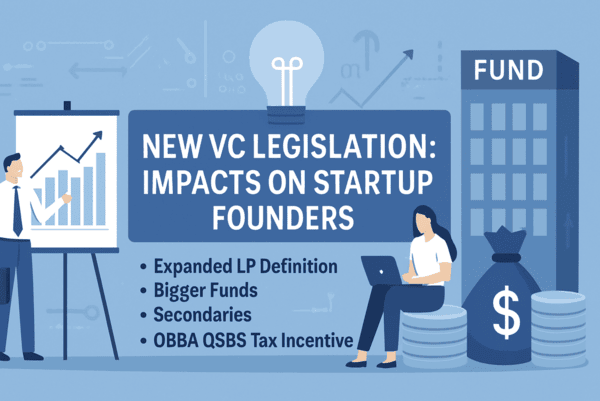
If you’re building a startup, you probably don’t spend much time thinking about the arcane legalities of venture fund structures. But the reality is, the rules that govern how VCs operate have a huge impact on who gets funded, when, and under what terms. Some major changes are stirring in Congress, and if they pass, they could fundamentally change your fundraising landscape.
Let’s unpack what the proposed legislation could mean—not for the fund managers or the LPs, but for you, the founders actually building the next wave of companies.
Congress is considering several bills, including the Developing and Empowering our Aspiring Leaders Act (DEAL Act) and the Improving Capital Allocation for Newcomers Act (ICAN Act), to modernize how VC funds operate. What’s at stake?
New Kinds of Investors on the Table: By expanding the definition of who qualifies as an “LP” and what sort of investments are “venture capital” enough, funds that might have traditionally sat on the sidelines—like secondary funds or funds-of-funds—could now play a bigger role. Translation: More pools of capital looking for great startups.
- Bigger and More Diverse Funds: Smaller and emerging managers will be able to raise larger funds (up to $150M instead of the current $10–12M cap) and from a much broader array of LPs. This is a big deal, because those managers are the ones who typically take early bets on founders outside the Stanford-to-Sand Hill pipeline.
- Real Liquidity for Founders: With secondary fund investments and secondaries trading made easier, founders may have more legit pathways to sell shares (without running afoul of technical rules). That means more ways for you and your early team to unlock value—without waiting a decade for an exit.
1. Greater Access to Capital
More and bigger funds mean founders, especially outside the big coastal hubs or non-traditional backgrounds, have a better shot at pitching investors who actually have dry powder and flexibility to back you.
2. More Experimental and Founder-Friendly Fund Managers
New rules mean more “emerging managers” (aka "micro VCs"). Those are often the folks who know how to hustle, find diamonds in the rough, and don’t just follow the crowd. For scrappy founders, these are the GPs actually willing to write that crucial first or second check.
3. More Secondaries and Early Liquidity
With secondaries getting the regulatory green light, founders could have new options to take chips off the table or bring in strategic new partners—without getting stuck in an “all or nothing” exit pressure cooker.
4. More Diverse LPs Means More Mission-Aligned Capital
Expanding the LP universe means more family offices, foundations, and even prospective individual investors. The hope? More values-based, long-term thinking capital that’s aligned with your vision—not just chasing quick returns.
Sure, more capital is great, but not all money is created equal. As new types of funds and LPs enter the game, founders will need to vet partners as carefully as VCs vet startups. Alignment, patience, and value-add will matter more, not less.
And while these bills are working their way through Congress with bipartisan support, nothing is law yet. As with anything regulatory, the devil will be in the details.
In case you missed it, the One Big Beautiful Bill Act passed on July 4th, 2025, included a significant upgrade to the QSBS (Section 1202) treatment for investors in early stage startups. Read our blog article on this development.
If even part of these reforms go through, the effect could be enormous for founders. More investors, more fund managers willing to roll up their sleeves—and maybe, just maybe, a better shot for builders everywhere to get the backing they need.
Stay tuned for updates—and get ready to pitch a whole new generation of VCs who are entering the market just to find startups like yours.